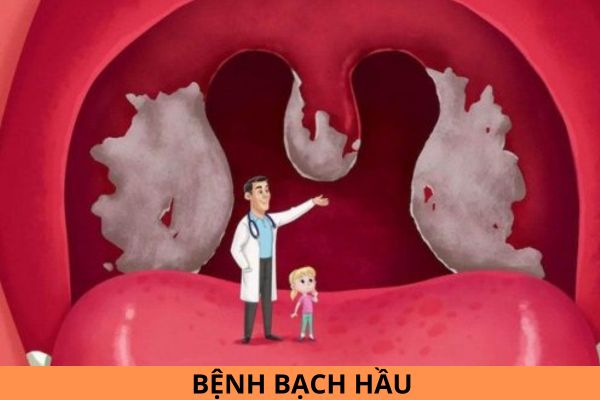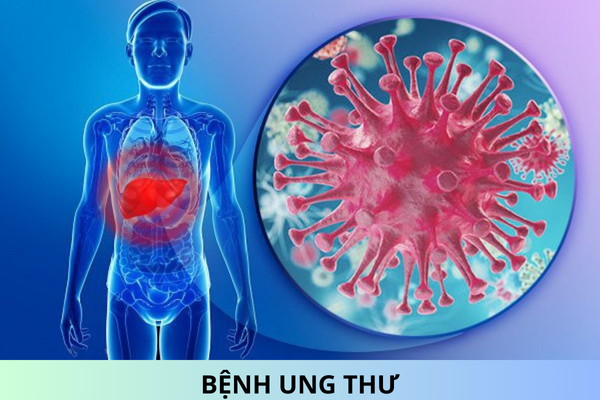What is Diphtheria? Signs, Symptoms, and Prevention Methods According to the Ministry of Health's Guidelines
What is diphtheria?
Pursuant to Section 1 of the Guidelines on Diagnosis and Treatment of Diphtheria issued together with Decision 2957/QD-BYT of 2020, the guidelines are as follows:
GENERAL OVERVIEW
Diphtheria is an infectious-toxic disease transmitted via the respiratory route and has the potential to cause epidemics. It is caused by the bacterium Corynebacterium diphtheriae (also known as Klebs-Loeffler bacillus). The disease commonly affects children under 15 years old and individuals who lack immunity to diphtheria due to insufficient vaccination. The bacteria often localize and damage the upper respiratory tract (nose, throat, larynx), forming firm, adhesive pseudo-membranes that are difficult to peel, thereby producing toxins that cause systemic intoxication (affecting the heart, kidneys, and nerves) leading to a high risk of death due to airway obstruction and myocarditis. The disease has specific treatment drugs, including antibiotics and diphtheria antitoxin (SAD), and can be prevented by vaccination.
Therefore, diphtheria is an infectious-toxic disease transmitted via the respiratory route and has the potential to cause epidemics. It is caused by the bacterium Corynebacterium diphtheriae (also known as Klebs-Loeffler bacillus).
The disease commonly affects children under 15 years old and individuals who lack immunity to diphtheria due to insufficient vaccination.
The bacteria often localize and damage the upper respiratory tract (nose, throat, larynx), forming firm, adhesive pseudo-membranes that are difficult to peel, thereby producing toxins that cause systemic intoxication (affecting the heart, kidneys, and nerves) leading to a high risk of death due to airway obstruction and myocarditis.
The disease has specific treatment drugs, including antibiotics and diphtheria antitoxin (SAD), and can be prevented by vaccination.

What is diphtheria? Signs and prevention methods as guided by the Ministry of Health? (Image from the Internet)
How does the Ministry of Health guide diphtheria prevention?
Pursuant to Section 7 of the Guidelines on Diagnosis and Treatment of Diphtheria issued together with Decision 2957/QD-BYT of 2020, the guidelines for diphtheria prevention are as follows:
- All suspected diphtheria patients must be hospitalized for isolation until two negative bacterial test results are obtained. Each sample should be taken 24 hours apart and not more than 24 hours after antibiotic treatment. If testing conditions are unavailable, patients must be isolated for 14 days after antibiotic treatment.
- Wash hands properly with soap or disinfectant solution.
- The patient's residence, room equipment, utensils, and clothing must be disinfected and sanitized.
- Diphtheria vaccination: In the national expanded immunization program, use multi-component vaccines: diphtheria - pertussis - tetanus for children. Start vaccination at 2-3 months old, administer 2 doses, each 1ml, 1 month apart. Repeat annually for up to 5 years.
- For contacts: Test for bacteria and monitor for 7 days.
+ Administer a single dose of benzathine penicillin (for children ≤ 5 years old: 600,000 units; for children > 5 years old: 1,200,000 units).
+ Or take Erythromycin (children 40mg/kg/day, 10mg/dose every 6 hours) for 7 days. Adults 1g/day, 250mg/dose every 6 hours.
+ Or Azithromycin: children 10-12mg/kg once/day, maximum 500mg/day for 7 days. Adults: 500mg/day for 7 days.
How does the Ministry of Health guide diphtheria prevention?
Pursuant to Section 7 of the Guidelines on Diagnosis and Treatment of Diphtheria issued together with Decision 2957/QD-BYT of 2020, the guidelines for diphtheria prevention are as follows:
- All suspected diphtheria patients must be hospitalized for isolation until two negative bacterial test results are obtained. Each sample should be taken 24 hours apart and not more than 24 hours after antibiotic treatment. If testing conditions are unavailable, patients must be isolated for 14 days after antibiotic treatment.
- Wash hands properly with soap or disinfectant solution.
- The patient's residence, room equipment, utensils, and clothing must be disinfected and sanitized.
- Diphtheria vaccination: In the national expanded immunization program, use multi-component vaccines: diphtheria - pertussis - tetanus for children. Start vaccination at 2-3 months old, administer 2 doses, each 1ml, 1 month apart. Repeat annually for up to 5 years.
- For contacts: Test for bacteria and monitor for 7 days.
+ Administer a single dose of benzathine penicillin (for children ≤ 5 years old: 600,000 units; for children > 5 years old: 1,200,000 units).
+ Or take Erythromycin (children 40mg/kg/day, 10mg/dose every 6 hours) for 7 days. Adults 1g/day, 250mg/dose every 6 hours.
+ Or Azithromycin: children 10-12mg/kg once/day, maximum 500mg/day for 7 days. Adults: 500mg/day for 7 days.
What are the signs of diphtheria as guided by the Ministry of Health?
Pursuant to Section 3 of the Guidelines on Diagnosis and Treatment of Diphtheria issued together with Decision 2957/QD-BYT of 2020, the signs of diphtheria are as follows:
[1] Pharyngeal diphtheria
- Incubation period: 2-5 days without clinical symptoms.
- Initial period:
+ The patient usually has a fever of 37.5-38°C, sore throat, discomfort, fatigue, poor appetite, slightly pale skin, and a runny nose that may contain blood.
+ Throat examination: Slightly red throat, tonsils have white patches of pseudo-membrane on one side. Small, movable, non-painful cervical lymph nodes can be felt.
- Full-blown period: On the 2nd-3rd day of the illness.
+ General: The patient has a fever of 38-38.5°C, painful swallowing, pale skin, severe fatigue, poor appetite, rapid pulse, slight hypotension.
+ Throat examination: Pseudo-membrane spreading on one side or both tonsils; in severe cases, the pseudo-membrane covers the uvula and soft palate. Initially, it is ivory-white, then turns slightly yellow, adheres tightly to the mucosa, causing bleeding when peeled off; if peeled off, it grows back quickly within a few hours; the pseudo-membrane is tough, non-dissolvable in water, with normal mucosa around it.
+ Swollen, painful lymph nodes at the angle of the jaw. The patient has a significant runny nose, with white or pus-mixed discharge.
[2] Malignant diphtheria
- Can appear early, within the first 3-7 days of the illness.
- Severe toxic-infectious condition with a high fever of 39-40°C, widespread pseudo-membrane over the throat and mouth.
- Severely swollen cervical lymph nodes causing neck swelling, and early complications such as myocarditis, kidney failure, and nerve damage.
[3] Laryngeal diphtheria
- Rarely seen as isolated laryngeal diphtheria, usually part of pharyngeal-laryngeal diphtheria.
- The clinical picture includes acute laryngitis (barking cough, hoarse voice, slow inhalation with a stridor) that leads to asphyxiation in the late stage.










